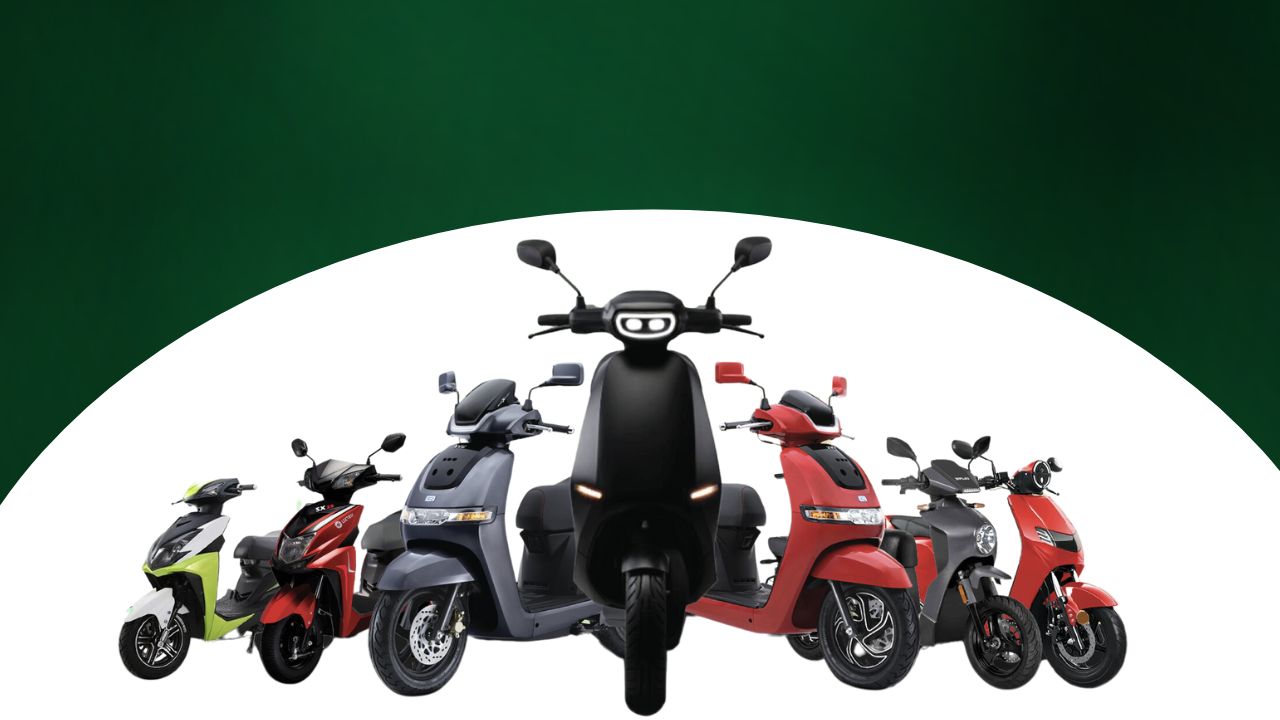Introduction
Imagine zipping through city streets on a scooter or bike that's quiet, clean, and doesn't require trips to the gas station. That's the magic of electric vehicles (EVs)!
Unlike traditional gasoline-powered vehicles, two-wheeler EVs run on electric motors and rechargeable batteries, leaving behind zero harmful emissions, making them a cleaner and more sustainable transportation option.
This eco-friendly revolution is poised to disrupt the massive Indian two-wheeler market, valued at over $15 billion in 2023 according to the Society of Indian Automobile Manufacturers (SIAM), with electric scooters and bikes leading the charge.
The Evolving EV Landscape: Catering to Different Needs
-
Business-to-Business (B2B): This refers to the sale of electric vehicles directly from businesses (manufacturers or dealerships) to other businesses. In the context of EVs, the B2B segment focuses on electric vehicles for commercial use. Fleet operators, delivery services, and ride-hailing companies are prime examples.
-
Business-to-Consumer (B2C): This refers to the sale of electric vehicles directly from businesses (manufacturers or dealerships) to individual consumers.
In the Indian market, electric scooters and bikes are gaining traction among B2C customers seeking a sustainable and economical mode of transportation for daily commutes within cities.
The B2C segment is particularly influenced by government subsidies and tax breaks that make EVs more affordable.
Major Market Players
Several prominent players are shaping the Indian EV market:
- Established Manufacturers: Household names like Hero Electric, Bajaj Auto, and TVS Motors, known for their popular motorbikes and scooters, are now offering electric variants. Their experience in the traditional two-wheeler market positions them well to compete in the growing EV segment.
- New Entrants: A wave of innovative startups is pushing the boundaries of design and technology. Companies like Ola Electric, Ather Energy, and Okinawa Autotech are offering stylish and feature-rich electric scooters that are attracting a younger generation of environmentally conscious consumers.
Benefits of Electric Vehicles: A breath of fresh air for India
EVs boast zero tailpipe emissions, drastically reducing air pollution, especially in urban areas. A 2022 government report estimates a 1.5 Gigatonne CO2 equivalent reduction by 2030 through EV adoption. Plus, electricity costs are lower than petrol, leading to substantial fuel savings.
The booming gig economy, with its delivery services, ride-hailing, and e-commerce platforms, finds EVs particularly attractive:
- Lower Costs: Companies significantly reduce fuel expenses for their fleets, boosting profitability.
- Government Support: Subsidies and tax breaks for EVs from the Indian government make them a financially smart choice.
- Greener Image: Companies leveraging EVs project an environmentally conscious image, attracting sustainability-minded customers.
Benefits Beyond the Gig Economy: B2B companies across industries are also drawn to EVs due to:
- Lower Operating Costs: Reduced electricity costs compared to petrol translate to increased profitability.
- Environmental Benefits: EVs contribute to a greener supply chain and enhance a company's brand image.
Electric vehicles offer a win-win for India, promoting cleaner air, quieter cities, and a more sustainable future for businesses and consumers alike.
Government Incentives Drive Consumer Adoption
The Indian government is actively promoting EV adoption through a range of incentives for individual consumers:
- FAME-India (possibly transitioning to FAME III): The Faster Adoption and Manufacturing of Electric Vehicles (FAME) scheme offered subsidies on the upfront cost of electric vehicles. While the details of FAME III are yet to be finalized, it's likely that some form of government support for EV purchases will continue.
- Reduced GST Rates: The Goods and Services Tax (GST) on electric vehicles is lower than on petrol vehicles, further reducing the purchase price.
- Income Tax Benefit on EV Loans: Section 80EEB of the Income Tax Act allows for a deduction of interest paid on loans taken to purchase electric vehicles up to a maximum of Rs. 1.5 lakh. This can be claimed in the year in which the interest is paid. (Source: ClearTax - Income Tax Deduction for Electric Vehicles)
Challenges and Considerations
While the future looks bright for EVs in India, there are some key challenges that need to be addressed:
- Battery Infrastructure: The current network of charging stations, while important for four-wheelers, is insufficient to support widespread EV adoption.
For two-wheelers, the focus should shift towards building a robust battery swapping infrastructure across cities and highways. Battery swapping offers a much faster turnaround time compared to charging, making it ideal for short commutes typical of two-wheeler usage.
- Battery Costs: While decreasing, battery costs are still a major factor influencing the overall price of EVs. Technological advancements and economies of scale are needed to bring down battery costs.
- Consumer Awareness: Creating awareness about the long-term benefits and cost-effectiveness.
Future Outlook:
The outlook for EVs in India is promising. With continued government support, infrastructure development like charging stations, and advancements in battery technology to bring down costs, EVs are poised to become a mainstream mode of transportation.
This shift promises not only cleaner air in Indian cities but also a quieter and more sustainable future for urban mobility. However, addressing challenges like range anxiety and consumer awareness remains crucial for widespread adoption.
As both B2B and B2C segments see continued growth, electric scooters and bikes have the potential to become the silent workhorses of a greener India.
DISCLAIMER: This blog is solely for educational purposes and not to offer any investment advice. Please do your own research or consult a financial advisor before making any investment decisions.



Comments